A lot of gardeners aspire to make their flowering plants thrive and grow better, as well as enhance the quality of blooms. Epsom salt is a naturally occurring mineral compound of magnesium sulfate that has been attracting attention about its potential benefits in promoting flower production. In this article, we unpack the science behind Epsom salt, explaining how its essential nutrients may promote plant health, boost chlorophyll synthesis, and eventually lead to more brilliant blossoms. We will discuss methods of application, including optimal rates for utilizing Epsom salts and incorporating them into your gardening routine, which will also equip you with knowledge on how to increase blooms on your plants effectively.
Understanding the Role of Epsom Salt in Plant Growth
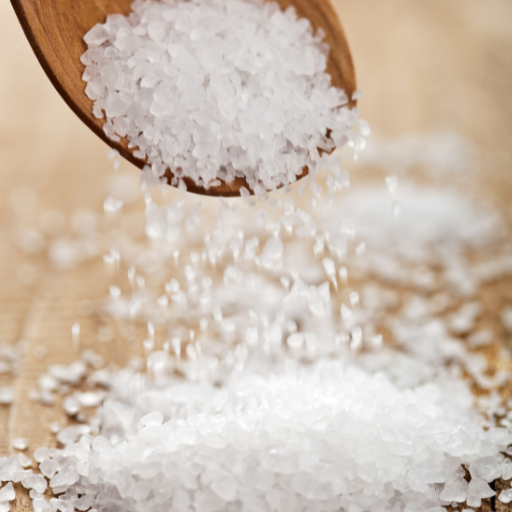
For example, one such mineral is Epsom salt, which has a high content of magnesium, which is very important for many physiological processes in plant growth. The role of magnesium as an essential cofactor in photosynthesis can be explained by the fact that it enhances chlorophyll formation, which is crucial for capturing sunlight and converting it into chemical energy. This promotes the healthy development of leaves and increases overall plant vigor. In addition, magnesium helps to form secondary metabolites, thereby taking part in the process of flower and fruit formation. This element also strengthens soil structure and affects microbial activity around roots, optimizing plants’ ability to take up other nutrients they need more effectively.
What Is Epsom Salt and Why Do Plants Need It?
Epsom salt, scientifically known as magnesium sulfate (MgSO₄·7H₂O), occurs naturally as a mineral compound consisting of magnesium, sulfur, and oxygen with approximately 9.8% by weight being pure Mg. Magnesium serves many biochemical functions, including the production of chlorophyll pigment necessary for photosynthesis, among others.
Sulfur also plays a significant role because it makes up some amino acids found in proteins; thus, its deficiency would result to reduced synthesis rates for enzymes having metabolic roles within plants. Besides, other nutrients such as nitrogen and phosphorus are absorbed easily due to enough magnesium, leading to improved health status overall, including better flowering.
When applying it, one should consider using one tablespoon per gallon on water for general plant care so that they are not subjected to harsh concentrations while at the same time providing them with balanced dieting methods all through their lifetime; these recommendations may differ depending on plant need especially when under active growth or flowering stages when demands are high; thus Epsom salts serve this purpose making them a very important gardening supplement for both growth and reproductive success in flowering species.
The Science Behind Magnesium and Sulfur in Flowering Plants
Magnesium (Mg) and sulfur (S) have an essential role in physiological processes in flowering plants. For instance, magnesium is the main component of chlorophylls, the pigments responsible for photosynthesis, which makes energy available to plants. Different plant species require varied amounts of magnesium, between 0.2% and 0.5% by weight of the dry matter content of their tissues. Without adequate supplies of magnesium through either soils or foliar sprays, interveinal chlorosis, stunted growth, and reduced flowering could occur.
While secondary macronutrients like sulfur are often overshadowed by major ones, they play vital roles in biosynthesis pathways such as those involved in making proteins and enzymes, including cysteine and methionine. Optimum tissue levels usually range from 0.1 % to 0.3 % on a dry weight basis. If sulfur is deficient, then there will be a limited synthesis of chlorophyll that affects photosynthesis, leading to impaired flower formation and development of fruits, too.
Magnesium enhances the assimilation of other nutrients such as nitrogen (N) and phosphorus (P), in terms of nutrient uptake by promoting root development and nutrient transport mechanisms. The interplay among these elements is critical; for example, magnesium deficiency is often associated with excess nitrogen that can retard flowering and plant vigor generally. Indeed, research shows that under controlled conditions, a 20-30% increase in flower production can be achieved through the application of magnesium sulfate to several species of flowering plants, thus highlighting its importance as a supplement in horticulture. Correct use of Epsom salt supports these vital processes while broadening performance possibilities for flowering plants.
Misunderstandings surrounding Epsom Salt
One common misconception about Epsom salt is that it promotes general growth and flowering regardless of the plant species involved. Magnesium and sulfur indeed have many benefits for most plants but excessive use may lead to poor nutrient balance especially if other essential nutrients are scarce. Another fallacy some gardeners hold is treating Epsom salt as a substitute for complete fertilization practice. However, it should be understood that Epsom salts are not full fertilizers; this means they do not supply necessary macronutrients like nitrogen, phosphorous, and potassium. Instead, its use should be employed as an accompanying substance within well-balanced fertilizer-based programs. Such understandings prevent undue reliance on Epsom salts and maintain optimum plant health through appropriate nutrition management systems.
Identifying the Right Flowering Plants for Epsom Salt
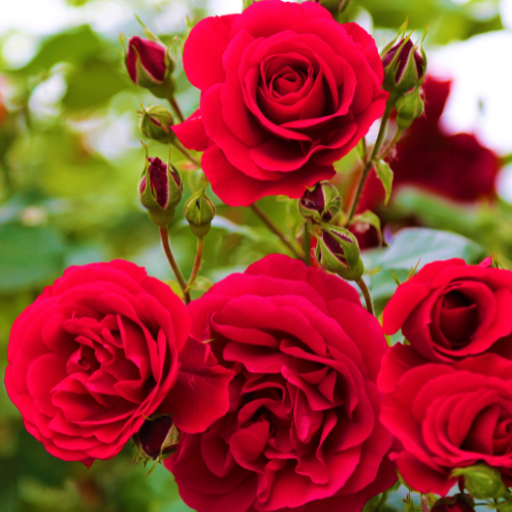
When used on particular flowering plants, Epsom salt has been shown to be very effective because of their specific nutritional requirements and growth habits. Some of the flowers that respond positively to magnesium and sulfur include roses, tomatoes, and peppers. For instance, roses are well served by using Epsom salts as they enhance colour intensity and all-over blooming; common advice is to use 1-2 tablespoons per foot high or as a foliar spray. Also, tomatoes exhibit better fruit quality and yields with Epsom salt, especially in soils deficient in magnesium. Suggestedly one can incorporate it into planting holes or during the growing phase as a top dressing. Peppers also show increased flowering and fruit set when treated with Epsom salt, just like tomatoes, among others. It is important to assess soil health and conduct nutrient analysis prior to the supplementation process since this helps determine accurate application rates for optimized flowering.
Which Flowering Plants Benefit Most from Epsom Salt?
- Roses: For these types of plants applying Epsom salts results into profound enhancement of bloom quality and pigmentation. The recommended dose is between 1-2 tablespoons per foot height applied either in soil or as a foliar spray. Regular applications within growing seasons can increase flower production significantly.
- Gardenias: Gardenias are highly responsive to magnesium levels, so Epsom salt may help correct yellow leaf disorder, leading to more vigorous foliage growth. The Application should be made in early spring at a rate of 1 tablespoon mixed with water, sprayed directly on the leaves to maximise uptake.
- Azaleas: These shrubs benefit from adding Epsom salt because they need magnesium for improved leaf coloration and overall plant vigor. A typical method involves mixing 1 to 2 tablespoons in a gallon of water and treating the base during the blooming period.
- Camellias: Camellias are also magnesium-loving plants like azaleas. Thus, the addition of Epsom salt at the rate of approximately 1 tablespoon per plant during the spring season may result in lush foliage and profuse flowering, making the plant more attractive.
- Hibiscus: Inhibits growth and enhances colorful flowers in hibiscus when applied to it. The usual process involves dissolving 1 tablespoon in water and applying it every four to six weeks during the growing season for their nutrient requirements.
- Lilacs: When applied with Epsom salts, lilac can enhance blooming performance and overall plant health. A general application of 1 tablespoon per bush once each spring can significantly increase bloom density and quality.
Signs Your Flowering Plants Might Need Epsom Salt
- Yellowing Leaves: One of the most noticeable signs that your flowering plants could be lacking enough magnesium is when there are yellow leaves beginning between leaf veins This is usually an indication that magnesium is deficient thus providing appropriate quantities through Epsom salt for chlorophyll synthesis might be a solution.
- Poor Bloom Production: If your plants do not flower as expected or if you see small blooms that are less vibrant, this could mean that they lack sufficient magnesium. Richness in coloration is important for enhancing blossom development, so use ample nutrients, including Epsom salts.
- Growth That Is Stunted: An inadequate amount of magnesium could slow down or stop the growth in flowering plants. If you observe that your plants are not reaching full size or have reduced vigor, Epsom salt can help stimulate growth by addressing the shortcomings of minerals.
- Thin, Weak Stems: When stems appear slender and weak instead of being strong and robust, it may indicate a lack of vital nutrients such as magnesium. The consistent use of Epsom salt can support overall plant structure while strengthening the stems.
- Leaves Dropping Too Early: This is another symptom that flowering plants may exhibit whenever they experience nutrient deficiency, including magnesium. By providing essential levels of magnesium, Epsom salt helps retain foliage health and reduce unnecessary leaf drops.
Plants That Should Not Be Applied With Epsom Salt
Certain plants may not benefit from Epsom salt application because they require specific nutrients or because they are sensitive to certain substances. For instance, some Brassica crops like cabbage and broccoli thrive better when grown with enough nitrogen; therefore, introducing excessive amounts of Epsom Salt would result in toxicity due to an overdose of magnesium. Similarly, balanced nutrient availability is most suitable for nightshade family plants such as tomatoes and peppers which cannot cope with high levels of magnesium introduced into their systems.Lastly, succulents and cacti that survive in low-nutrient environments might be damaged by the excess magnesium causing root rot among other problems.The nutritional imbalance should first be assessed before applying Epsom salts in order not to disrupt its balance for each type.
Proper Application Methods for Epsom Salt
- Dissolve one tablespoon of Epsom salt in a gallon of water to drench the soil. Use this solution directly at the base of plants. It promotes magnesium and sulfate to roots for immediate nutrient absorption.
- If you want to apply Epsom salt directly, mix a gallon of water with 1 tablespoon of Epsom salt for a foliar spray. This method treats magnesium deficiencies rapidly since leaves are very good at absorbing nutrients through their surfaces.
- Sprinkle 1-2 tablespoons of Epsom salts around the plant’s base and then lightly incorporate them into the topsoil; or, just pour in about 1-2 tablespoons around the bottom section of the stem and mix them into the topsoil. Epsom salts allow the slow release of nutrients, thus making it easier to access them as time goes by, which is particularly helpful in case there is a need for long-term growth.
Preparing Epsom Salt Solutions for Foliar Sprays
Measure 1 tablespoonfuls of Epsom salts as your first step in preparing Epsom salt solutions for foliar sprays. Combine these well with a gallon of water after setting aside a container suitable for spraying purposes. To facilitate a quick dissolving process, using warm water is highly recommended here because it does not take too long before full dissolution occurs when the temperature increases slightly above the ambient level. Once dissolved, ensure proper mixing before transferring it to spray bottles.The best time to use this solution would be early morning or late evening hours when temperatures are relatively cooler hence minimizing heat loss through rapid evaporation. It is important that you remember to cover underneath part specifically where stomata are located on leaves so that they can uptake more nutrients.. During growing seasons, especially every one or two weeks, we will apply this foliar spray so as to mitigate any signs of insufficient magnesium supply among plants.
Some Dos When Applying Epsom Salt on Soil
There are several things you need to keep in mind when using Epsom salt on soil for maximum nutrient uptake and plant health. The first one is conducting a prior analysis on soil to determine existing levels of Magnesium and its pH balance which will inform you about the amount of Epsom salts required at that time. The general recommendation is for each plant, you have 1-2 tablespoons, or if we talk about large gardens, then every 100 sq. ft there should be added 1 cup of Epsom salt. During planting it can be tilled in or worked into the top layer of soil around established plants.
Afterward, apply water thoroughly to enhance the dissolution process, thus allowing penetration of magnesium and sulfate ions effectively into the root zone. Time is also an important factor; applying this before new growth begins during early spring is favorable as it provides essential nutrients at the start of growing season for instance. Finally, avoid overdoing it because too much magnesium might disrupt nutrients balance hence retarding growth in plants.In order to adjust future applications in relation with plant response, monitoring crops regularity will help so much..
How Often Should Epsom Salt Be Put On Flowering Plants?
The frequency of applying Epsom salt to flowering plants will depend on particular plant requirements and environmental conditions. In general, it is suggested to use Epsom salts every four to six weeks during the growing season. For flowers that need more magnesium, start giving them applications slightly before they bloom in order to increase the quality and yield of their flowers. One should also keep a close eye on any signs of low magnesium levels in these crops like yellow leaves so that the application rates can be adjusted when needed. Always make sure you water your plants enough after application for easy absorption of nutrients and to prevent salt buildup within the soil.
Maximizing Flower Production with Epsom Salt
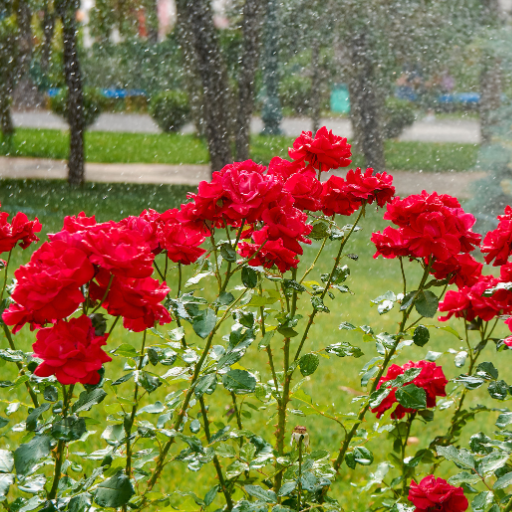
So, what is the significance of Epsom Salt for flower production? The same sources claim that Epsom Salt can drastically increase magnesium levels in soils and that it is vital for the production of chlorophyll and photosynthesis. For best results, use Epsom salt when buds are appearing or at other times when flowers begin to form. Some advice suggests dissolving two tablespoons of Epsom salts in a gallon of water and applying this mixture directly into the soil or using it as a foliar spray once every four to six weeks throughout the growing period. This method also ensures that blooms are healthy and vibrant for longer while promoting rapid floral growth. Besides, adding compost and balanced fertilizer with Epsom salt also promotes higher availability of nutrients thereby enabling a healthier blooming garden. Consequently, by observing regular plant life health status, modifications in application depending on visual plant reactions may further optimize flower production.
How Magnesium Content in Epsom Salts Promotes Bud Formation
In fact, high concentrations of magnesia in this substance have been known to boost bud formation through various physiological processes within plants. As an essential element for chlorophyll, magnesium plays a crucial role in the mechanisms behind efficient photosynthesis and energy generation during this stage. Also, magnesium helps synthesize proteinic compounds as well as nucleic acids, influencing cell division and growth required for the development of buds directly. The use of Epsom salts during periods of fast growth causes more buds to develop and become bigger than they otherwise would be. A widely used method involves mixing with water before absorption by roots so as to encourage better distribution across them which makes sure that it functions effectively in initiating bud growth. Magnesium concentration can be maintained within the appropriate range needed for robust development using frequent applications.
How to Extend Blooming Period with Epsom Salt
The concept behind elongating blooming periods with Epsom salt is premised on its ability to enhance the uptake of nutrients, particularly magnesium and sulfur; two vital elements for flower growth and liveliness. Such research indicates that using Epsom salts can increase root development therefore, water absorption, thus improving the life span of blooms. The best regime is dissolving Epsom salts in water and applying them near plant bases, usually every four to six weeks during a growing season. This method is advised to keep up magnesium levels so that there are enough resources for non-stop flowering. Furthermore, with balanced fertilizers and organic matter, the use of Epsom salt as an integral part of an all-around nutritional program will have more pronounced effects on the length of the blooming period because it improves the general health and strength of plants.
Combining Epsom Salt with Other Fertilizers for The Best Results
When blending Epsom salt with other fertilizers, it is essential to take into account the nutrient composition of each product so as to avoid lockout of nutrients and ensure compatibility. In particular, Epsom salt, which is rich in magnesium and sulfur, suits nitrogen-based fertilizers (like ammonium nitrate or urea) quite well since magnesium boosts nitrogen uptake. Furthermore, combining Epsom salt with phosphorus fertilizers can support blooming and root growth thus being vital for flowering plants. However, a soil test should be done before applying in order to determine the extent of available nutrients since too much fertilizer will result into effects such as burning or imbalance of nutrients. One recommended way of doing this is by establishing a proper schedule for fertility that combines organic fertilizers or slow-release granular products alongside Epsom salts, which ensures a sustainable nutrient supply, leading to better plant health as well. It is advisable that one follows up on their plants and adjusts these ratios whenever necessary since only then can you achieve desirable results.
Troubleshooting Common Issues When Using Epsom Salt
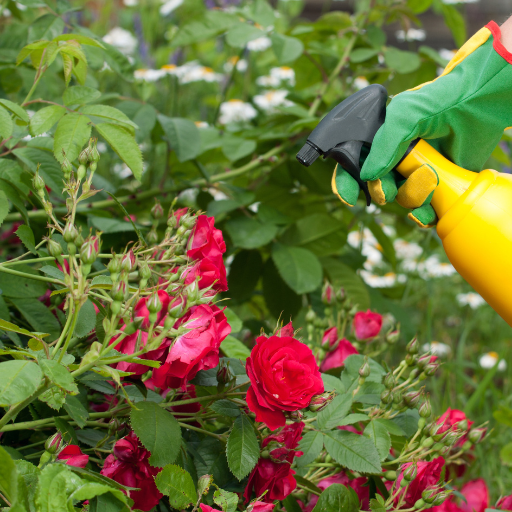
When using Epsom salt, sometimes there are some problems that might require troubleshooting. One commonly occurring problem is addition of excess magnesium through Epsom salt. The symptoms include curling leaves and yellowing particularly in older leaves. In order to address this, stop applying and flush the soil with water so that excessive levels of magnesium can be thinned out. Another problem is nutrient imbalance potential when utilizing only Epsom salts; it is necessary to have adequate levels other macronutrients or micronutrients in soil. Periodic soil testing can help identify any deficiency, leading to necessary adjustments to your fertilization program. Finally, care should be exercised while applying Epsom salt on plants that thrive well in low-magnesium soils, such as certain species of roses or succulents, as extra magnesium can retard their growth.
What Should You Do If Your Plants Look Over-Fertilized?
If your plants show signs of overdosing with Epsom Salt, you need to take urgent measures to mitigate the negative impacts caused by Magnesium toxicity. Firstly, discontinue the use of any form of Epsom Salt and observe whether there are any visible symptoms like leaf curling or yellowing. Leaching the soil by flooding it helps dilute the concentration (ions) of Mg2+ hence reducing its content and promoting root respiration.
It has been recommended that doing a soil test for quantification purposes will enable an individual to know what type they are dealing with in terms of their ground composition. For instance:
- Soil pH: Many plants’ ideal pH levels fall between 6.0 and 7.0; a pH outside this range may worsen nutrient uptake issues.
- Magnesium Levels: Generally, optimal Mg levels should be between 50 and 150 ppm (parts per million). If they are above this range, toxicity may be suspected.
- Calcium Levels: As magnesium’s antagonist, ensure adequate calcium levels in the soil. For many plants, the calcium concentration is normally between 1,000 and 3,000 ppm.
If the results show that there is too much magnesium, one can add gypsum or lime which are rich in calcium and restore the nutrient balance. Regular monitoring of these parameters will facilitate adjustments to fertilization strategies, ensuring plant health is maintained.
How to Know and Correct Lack of Epsom Salt Deficiency in Plants
Knowing when plants lack Epsom salt deficiency supports their growth, indicated through specific visual signs or altered plant health. The common symptoms include interveinal chlorosis where tissues between leaf veins become yellow while veins remain green and retardation due to inadequate production of chlorophyll.
To confirm Epsom salt deficiency; the following technical parameters must be tested:
- Magnesium Levels: Magnesium usually becomes deficient when its level drops below 50 ppm and can be determined by a soil test result indicating a serious decline in its availability with subsequent inhibition of photosynthesis, hence a slow growth rate.
- Soil pH: Maintaining soil pH between 6.0 and 7.0 is crucial because Mg is soluble at lower pH levels, which may increase its solubility, while severe acidity inhibits absorption, leading to an apparent deficiency.
- Calcium Levels: In order for magnesium to function properly, it has to have enough calcium present within itself; hence, concentration should range from 1000 up to 3000 ppm respectively. Calcium inadequacy leads to disproportions that exacerbate the lack of magnesium
To correct the shortage of Epsom salts, the use of magnesium sulfate (Epsom salts) is suggested. In most cases, the soil can be directly treated with a solution that contains between one and two tablespoons of Epsom salt dissolved in a gallon of water. Furthermore, ensure that conditions for your soil facilitate magnesium absorption by maintaining appropriate pH levels and balancing it with adequate calcium content. Continuous plant health alongside prevention of deficiency symptoms are ascertained by consistently monitoring and adjusting depending on results from soil test.
Can Epsom Salt Cause Harm? Understanding the Risks
However, just like any good thing, including Epsom salt application, it has its own bad sides if used without caution. Too much application of magnesium sulfate may result in toxicity caused by magnesium, which interferes with nutrient balance, thus inhibiting the uptake of essential nutrients like potassium and calcium, thereby affecting plant health. Additionally, excessively high amounts of magnesium cause imbalances in soils that affect microbial activity and structure leading to reduced fertility overall. Before applying this substance to soils, consider nutrient levels already present because an existing high concentration of magnesium could worsen these problems. Therefore, it is important to closely manage its usage according to instructions provided so as not to encounter any negative effects from it
Seasonal Tips for Using Epsom Salt
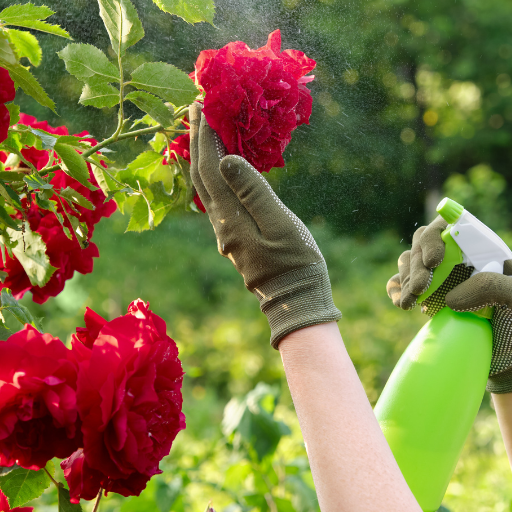
Epsom salt should be applied in a manner that is responsive to the changing seasons and takes into account the specific needs of plants and environmental factors. In spring, when plants are starting to grow again, you can apply a small amount of it to encourage better growth and increased intake of nutrients. For those flowers which blossom, using Epsom salt every 4-6 weeks will not only enhance blossoming quality but also make it more colourful. During summer, consider diluting it with water as a foliar spray for use during peak growth stages when magnesium uptake is optimal. Towards winter, however, the application of Epsom salt helps strengthen plants, thereby enhancing root development and making them withstand adverse conditions that may occur during the hibernation period. It is advisable not to use Epsom salts on plants during heavy rains since this leaches out the product making its effect minimal across the soil profile. Routine soil tests provide information about nutrient levels so that Epsom salts are used at right times without causing toxicity.
Seasonal Application of Epsom Salt
To effectively alter usage of Epsom salt according to seasons, one should take into consideration stages in plant growth specific for each year’s month as well as nutrient requirements within this period. Early spring necessitates an early application where the plant will then begin their initial growth after coming out from dormancy; therefore, carrying out a prior soil analysis will enable the fertilizer applicator to determine the level of magnesium already available thereon. The frequency of applying these types of fertilizers can be increased towards mid-spring so that flowering intensity may improve while by late spring through summer they can be used as foliar sprays for optimum absorption where there is rapid vegetative increase like at shoot elongation stage itself by bringing about quick uptake situated below surface layers in highly impervious soils. When fall comes around, growers often put some Epson salts on their crops just before deep freezing happens because they expect it to strengthen the root system, which should then give rise to a hardy character in them. Winter is a time of general dormancy with little or no physiological activities taking place; hence the use of any such growth regulators is discouraged at this time. It is therefore important to evaluate plant responses periodically and make necessary adjustments on the frequency, strength as well as concentration of Epsom salts in order to avoid unbalanced nutrients leading to poor flowering.
Using Epsom Salt during Different Flowering Stages
Applying Epsom salt effectively for various stages of flowering plants necessitates targeted practices that promote nutrient absorption and overall healthiness. At first, during the vegetative stage, about one tablespoon per gallon of water would be acceptable for a diluted solution of Epsom salt used to increase chlorophyll production and prompt healthy foliage growth. As soon as they get into their flowering phase, those who apply more often but still follow that same pattern will have enough magnesium required for flowers’ production if they only keep dilution constant so that blooming takes place constantly without hindrance. Therefore, spraying during this period can help quickly absorb magnesium, especially under conditions where soil compaction limits absorption rates. Cautious monitoring coupled with adjustments in these parameters may save you from some nutrient imbalances, which, when left unchecked, might affect final flower formation frequencies within given growing spaces.
Should You Use Epsom Salt During Winter? Best Practices
Most plants do not benefit from using Epsom salt during winter months as their metabolic activities decrease. However, the best practice is to use this chemical with caution in some situations such as with evergreen trees needing magnesium or during a very warm period where there is slight growth. It is important, therefore, to carry out soil tests before using Epsom salts in winter to check for nutrient levels and avoid cases of overfeeding, which can be fatal if not checked early enough. Drainage should also be adequate because when waterlogged, too many magnesium compounds are harmful to plant health. Consequently, being watchful of what will make them survive throughout the year, especially during winter seasons, is crucial.
Reference sources
- Gardening Know How
- Source: gardeningknowhow.com
- Summary: Gardening Know How provides guidance on using Epsom salts for flowering plants, recommending a solution of 2 tablespoons of Epsom salt per gallon of water. This solution can be used to mist plants once a month to supply magnesium and sulfur, which are essential for healthy plant growth and blooming.
- The Spruce
- Source: thespruce.com
- Summary: The Spruce suggests that for roses and other flowers, a mixture of one tablespoon of Epsom salt with a gallon of water should be applied around the base of the plants every two weeks. This practice can enhance bloom size and promote vibrant foliage.
- Martha Stewart
- Source: marthastewart.com
- Summary: Martha Stewart’s article highlights the benefits of Epsom salt in increasing bloom size, promoting lush green foliage, and enhancing seed germination. It suggests regular application to support the overall health and productivity of flowering plants.
Frequently Asked Questions (FAQs)
Q: What is the best way to apply Epsom salt to flowering plants?
A: The best way to apply Epsom salt is either as a foliar spray or as a soil drench. For foliar sprays, dissolve 1 tablespoon of Epsom salt in a gallon of water and apply directly to the leaves. For soil application, sprinkle the salt around the base of the plant and water thoroughly.
Q: How often should I use Epsom salt on my flowering plants?
A: It is recommended to use Epsom salt once a month during the growing season. However, frequency can vary depending on the specific needs of your plants and soil conditions.
Q: Can Epsom salt be used for all types of flowering plants?
A: While many flowering plants benefit from Epsom salt, it is not suitable for all. Plants like roses, tomatoes, and peppers respond well, but some plants with low magnesium needs might not benefit as much.
Q: What are the signs that my flowering plants need Epsom salt?
A: Common signs include yellowing leaves, particularly between the veins, and stunted growth. These symptoms often indicate a magnesium deficiency, which Epsom salt can help address.
Q: Can I overuse Epsom salt on my flowering plants?
A: Yes, overusing Epsom salt can lead to nutrient imbalances, particularly if the soil already contains sufficient magnesium. This can result in issues such as reduced plant growth and poor flowering.
Q: Is Epsom salt safe to use on indoor flowering plants?
A: Epsom salt is safe for indoor plants when used in moderation. It’s best to apply it as a diluted solution to avoid salt buildup in the soil, which can harm indoor plants over time.
Q: Can I mix Epsom salt with other fertilizers?
A: Yes, Epsom salt can be mixed with other fertilizers to enhance their effectiveness. However, it’s important to ensure that the combined nutrients do not exceed the needs of your plants, which could cause nutrient burn.
Q: How does Epsom salt improve the blooms of flowering plants?
A: Epsom salt provides essential magnesium, which plays a crucial role in photosynthesis and energy production. This helps promote vibrant, healthy blooms by ensuring the plant can efficiently convert sunlight into energy.
Q: Can Epsom salt help in treating blossom-end rot?
A: While Epsom salt is beneficial for plants, it is not a cure for blossom-end rot, which is often caused by calcium deficiency. However, it can support overall plant health, which may indirectly help manage the condition.
Q: Should I apply Epsom salt to flowering plants during winter?
A: It is generally not necessary to apply Epsom salt during winter when most flowering plants are dormant. However, for indoor or winter-blooming plants, you can continue light applications if needed.






